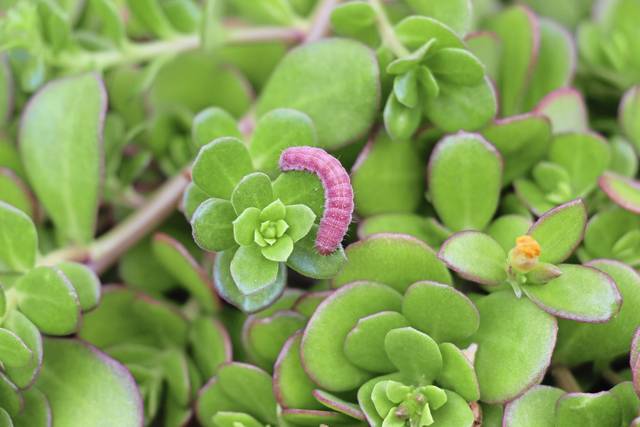The culprit to blame for missing flower buds
I’ve heard from a few gardeners this season, asking about what’s happening to their flower buds. The damage, at first, seems like it may be rabbits, deer or groundhogs nibbling off the flower buds before they can open, but after a bit of investigation, it’s often discovered that a small caterpillar known as the geranium or tobacco budworm is to blame.
This particular pest used to be primarily found in the southern US, but it has become quite a common pest in Pennsylvania in recent years. These little caterpillars enjoy eating the buds of several different species of annual plants. Their favorites are petunias, portulaca, ageratium, geraniums, zinnias, marigolds, snapdragons and nicotiana.
Signs of geranium budworm damage are missing flower buds. They do not typically eat leaves or stems; only unopened flower buds. To make matters worse, geranium budworms are nocturnal feeders who are seldom found during the day. When the sun is shining, they cling to stems or leaf undersides down in the plant, where they’re well camouflaged from predators. Then, at dusk, they crawl up the plants and begin to feed on the flower buds.
Geranium budworms are the caterpillars of a nocturnal moth. The adult geranium budworm moths are light brown with three dark bands across their wings. The adults don’t harm garden plants and are a favorite food of bats. Female moths lay eggs on or near host plants, and the subsequent caterpillars begin to feed immediately.
The caterpillars can be yellow, green, brown, pink or even maroon, depending on their maturity and their food source. To see them, you’ll have to head to the garden at night and examine plants with missing flower buds using a flashlight. When the caterpillars are young, they don’t really cause much damage. But, as the season progresses and they grow, they feed on more and more flower buds.
There’s really no preventative steps you can or should take to prevent this pest, other then possibly not planting their favorite host plants. Action only needs to be taken if you have many mysteriously disappearing flower buds. Then, look into exploring the garden at night to confirm that geranium budworms are to blame.
To control this pest, handpicking the caterpillars at night is easy and effective, though it’s also time consuming. Technically, they’re more of a nuisance than a true pest since they don’t eat food crops and they don’t kill plants. But, if you have so many of them in your garden that handpicking won’t suffice, organic pesticides based on Bacillus thuringiensis (Bt) will kill any caterpillars that feed on the sprayed foliage. When using Bt-based products, be careful to avoid spray drift onto nearby plants, especially those used by butterflies as host plants. Bt will kill all caterpillars, not just pest species.
While geranium budworms can cause aesthetic damage to certain annual flower plants, they aren’t the end of the world. And just because you had them this year, doesn’t mean they’ll be back next season. They don’t typically survive harsh winters, so if you have geranium budworms in your garden this season, you may find yourself grateful for any cold winter days to come!
Horticulturist Jessica Walliser is the author of several gardening books, including "Attracting Beneficial Bugs to Your Garden," "Good Bug, Bad Bug," and her newest title, "Container Gardening Complete." Her website is jessicawalliser.com. Send your gardening or landscaping questions to tribliving@tribweb.com or The Good Earth, 622 Cabin Hill Drive, Greensburg, PA 15601.
Remove the ads from your TribLIVE reading experience but still support the journalists who create the content with TribLIVE Ad-Free.

